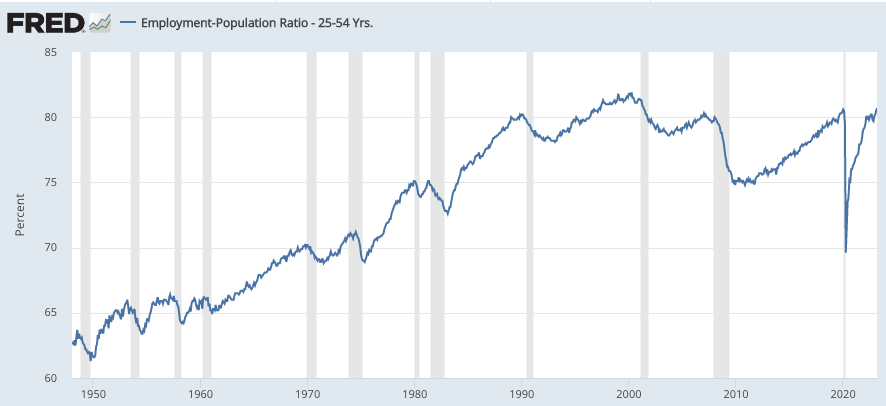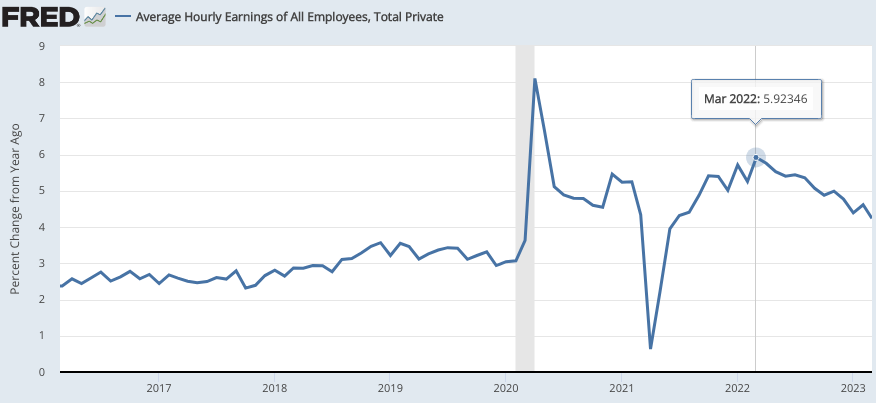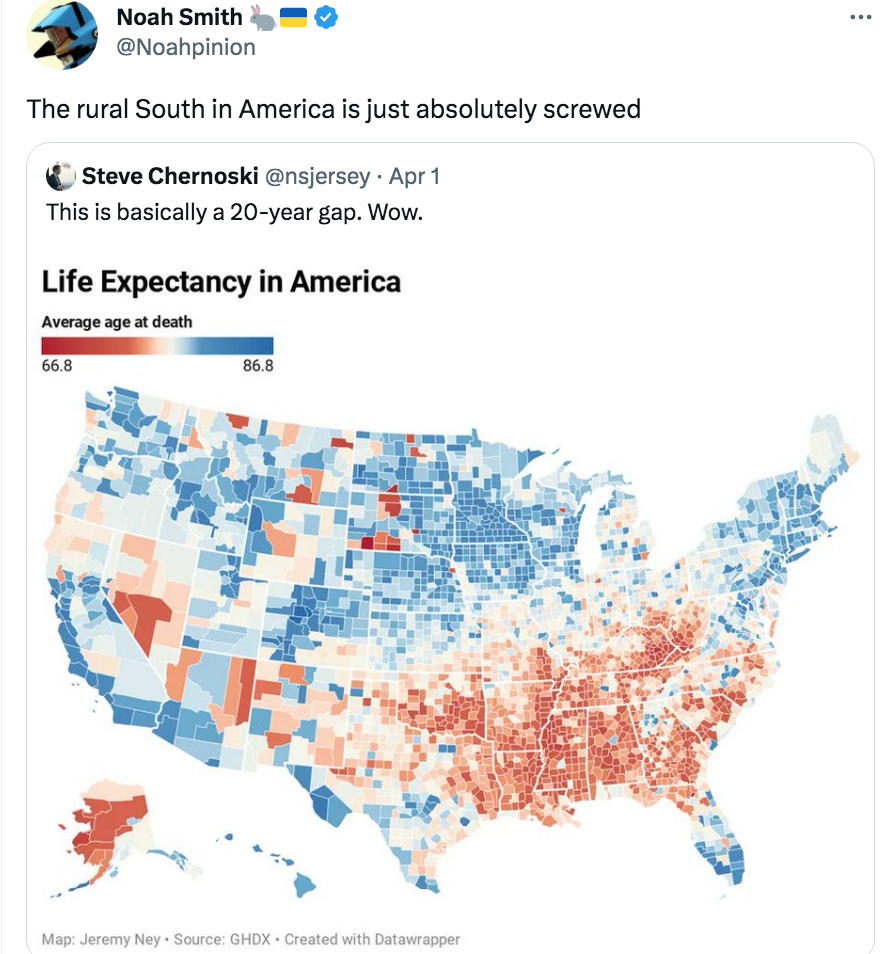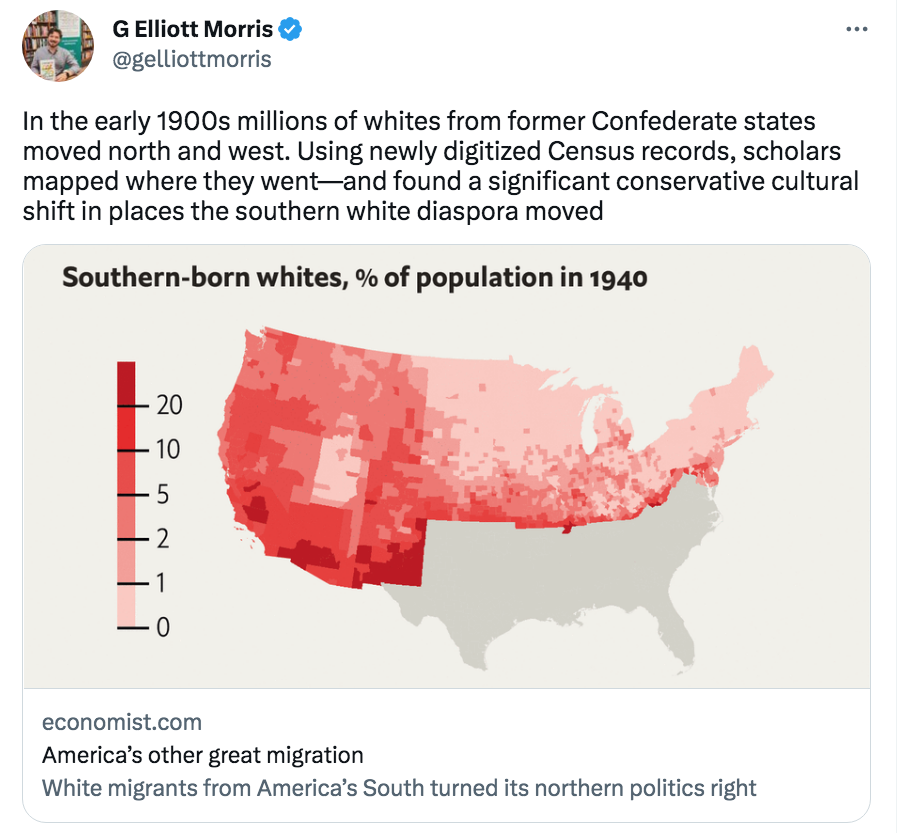Before getting into film, let me thank commenter “ReverendWicksCherrycoke” for directing me to read “The Adventures and Misadventures of Maqroll”. I’m not particularly well read, and had never even heard of the author, Álvaro Mutis. Other’s seem to know him, however, as on the back cover Gabriel Garcia Marquez is quoted saying, “Mutis is one of the greatest writers of our time.” It’s actually a collection of 7 interconnected novelas, and you’ll rarely find a more enjoyable book.
As far as films, Amateur was the most pleasant surprise.)
Newer Films:
The Fabelmans (US) 3.7 This has many of the strengths and weaknesses of a typical Spielberg film, and I usually prefer his (earlier) escapist narratives. However, while his films are often too sentimental, the subject matter of this one is close to his heart, which helps a lot.
There’s a great scene at the end where Sam is asked if he wants to meet the world’s greatest director. He is introduced to John Ford, played by David Lynch. So which one is it; who’s the greater director? (Ford was arguably the best American director as of 1965, and Lynch was perhaps the best after 1980.) Either way, I thought it was one of the funniest scenes I’ve ever seen in a Spielberg film—inspired casting.
In general, Spielberg reminds me of the Flemish painter Rubens. They have awe-inspiring talent, but one occasionally wishes they’d use it with a bit more subtlety. (Those high school bullying scenes—yikes.)
Broker (Japan/Korea) 3.7 Koreeda’s films are always impeccably directed. The ending is a bit too upbeat Hollywood for my taste, but this is an excellent film that will appeal to fans of Shoplifters.
Il Buco (Italy) 3.6 Almost a silent film, apart from the sounds of nature. The stunning visuals of Calabria (above and below ground) are extraordinary, and the only reason to see the film. If you watch it on an airplane . . . well, don’t say I didn’t warn you.
The Outfit (US) 3.6 This film is surprisingly good, but runs on for about 5 extra minutes at the point it should have ended.
Moonage Daydream (Britain) 3.5 Makes the case for David Bowie being more interesting as a person than musician, the opposite of most rock stars. He has an unusually wide range of talents, and while I’m not sure he’s great in any one area, the total package is pretty impressive. The film does an unusually good job of allowing the viewer to see the world the way Bowie did. And unlike Keith Richards, he kept getting more attractive as he aged. (Or perhaps men that are too attractive seem sort of repulsive?)
Holy Spider (Iran) 3.5 Directed by Abbasis and done in the style of Farhadi, but it falls well short of the peaks the latter director achieved in films such as About Elly and A Separation. It starts very strong, but becomes a bit too conventional as it progresses. Even so, it’s worth watching for fans of Iranian films.
Return to Seoul (Korean/French) 3.5 Lots of really good scenes, but the film has one fundamental problem. At some point the director must make a decision—and go one way or another. How do you want audiences to feel about a (rather long) film that revolves almost entirely around one unlikeable person? The director sort of dodged the issue.
The Sound of 007 (Britain) 3.4 A really enjoyable look at the music used in the most dominant film series in the history of cinema. I’m more of a visual person, but this documentary makes the case for music being the key to the Bond series. My only complaint is that I would have liked to see a bit more time spent on the Bond theme music—what makes it work so effectively?
Loving Highsmith (US, CC) 3.2 Interesting documentary about the author of the Tom Ripley novels.
EO (Polish, CC) 3.0 Well intentioned, but a rather crude and heavy handed film. Not quite sure why it got strong reviews. If you wish to see a film about a long-suffering donkey, I’d recommend Bresson’s Balthazar instead.
Vengeance (US) 2.8 This film has some amusing scenes, but suffers from two big problems. First, the director wasn’t able to decide what sort of film he wanted to make. It mixes scenes of farcical black comedy and serious drama that don’t seem to belong to the same film. And the screenplay occasionally felt very awkward, especially when the characters were talking like Hollywood screenwriters think they talk, not how actual people talk. It felt stilted and artificial. There’s nothing more cringe-worthy than a film that aims at BIG IDEAS, where the director is in way over his head.
Rolling Stone: The Life and Death of Brian Jones (UK) 2.5 Why is there almost no music in these music documentaries? Is this evidence that our intellectual property laws are even more perverse than I had been assuming? Instead we get boring theories that he was murdered, which is much less interesting than his music.
Older Films:
Where is the Friend’s House? (Iran, 1987, CC) 3.9 I had forgotten what it’s like to be eight years old. Kiarostami is also an extremely perceptive observer of the adults that the little boy encounters. You need to be patient and use your imagination, but this is a wonderful film.
Amateur (US, 1994, CC) 3.8 A delightful absurdist comedy filmed with great skill. Each actor is nearly perfect for their role.
The Spirit of the Beehive (Spain, 1973, CC) 3.8 It often has the feel of a classic silent film. One of my favorite films about childhood, and perhaps my favorite Spanish film.
Traffic (France, 1971, CC) 3.8 A bit less original than Playtime, and thus I’d rate is slightly lower, but still a masterpiece. In the second half of the 20th century, no one came closer than Jacques Tati to recreating the magic of Buster Keaton. Many will find this one to be more enjoyable than Playtime, as the humor is more centered around people, not architecture.
Millennium Mambo (Taiwan, 2001) 3.8 Great to see this again on the big screen. The first time around I noticed Mark Lee’s cinematography. This time I noticed Hou Hsiao-hsien’s amazing ability to get “true to life” performances from his actors.
There Was a Father (Japan, 1942, CC) 3.8 Ozu films have an uncanny ability to seem flat and unemotional, and then somehow end up with a feeling of almost overwhelming emotion. Where does that come from? How does he do it? Unfortunately, this print was in very bad shape. Ozu is one of the great artists of the 20th century—why haven’t his films been restored?
To Be of Not to Be (US, 1942, CC) 3.8 One of Lubitsch’s more entertaining comedies. The Nazi era is interesting in that we seem to be more emotionally involved as time goes by, not less (as you’d expect.) Comedies like The Producers, Hogan’s Heroes and this film might seem a bit tasteless if made today.
The Breaking Point (US, 1950, CC) 3.7 You would think that a remake of Howard Hawks’ To Have and Have Not (which starred Bogart and Bacall) would fall far short of the original, but this might even be better. A very young Patricia Neal has a sort of unforgettable face. The plot is quite different, so don’t assume “you’ve already seen it.”
The Battle for Algiers (Algeria/Italy, 1966, CC) 3.7 A surprisingly even-handed docudrama on the Algerian war for independence. At the time the film came out it probably seemed like the good guys had won. Now it seems like there weren’t any good guys. Today, Algeria’s almost certainly poorer and less free than it would be if it were still a French colony. “But they got what they wanted?” Well, they got one of the things they wanted (independence), but not the other (freedom.) There are no easy answers.
The Woman in the Window (US, 1944, CC) 3.7 This Fritz Lang noir is much better than I remember it, and better than Scarlet Street. For once, the Hitchcock comparisons make sense.
An Inn in Tokyo (Japan, 1935, CC) 3.7 Ozu’s last silent film is quite absorbing. Made at a time when Hollywood had already switched to sound.
News From Home (US/Belgium, 1976, CC) 3.7 A piece of conceptual art where the protagonist never appears onscreen. Although this is less impressive that Jeanne Dielman, I enjoyed it more. Lots of nostalgia revisiting the world of my youth, much of which I had forgotten. As you might expect, New York never looked grungier than in 1976, but I noticed lots of other things as well. The clothing, the big cars, the lack of Asians. Also, the noticeable lack of obese people (for reasons I’ll never, ever understand.)
The nostalgia doesn’t come from seeing the things you saw long ago; it comes from remembering what it was like to view those things through the eyes of a 21-year old man.
BTW, I’m noticing that none of the female directed films added to the S&S top 100 list actually deserve to be there, but they’re all worth watching. (Well, all but Wanda.)
Scarlet Street (US, 1945, CC) 3.6 The plot and dialogue are often implausible, but this Fritz Lang noir remains highly entertaining. It’s always amusing to see how Hollywood viewed the art world back then.
Cry of the City (US, 1948, CC) 3.5 This noir has a Scorcese-like plot and is directed by Siodmak. An above average noir.
Desert Hearts (US, 1985, CC) 3.5 Likable lesbian love story. Nice acting, dialogue and cinematography.
Monterey Pop (US, 1967, CC) 3.4 As a film, I’ve overrated this one. It’s not a particularly well-made documentary. But the performances by Otis Redding, Jimi Hendrix and Janis Joplin are electrifying. All three had recently achieved success, and all three would be dead within three years. (Redding died in a plane crash in my hometown, just a few months later.) For me, Joplin’s performance is the revelation. It seems like people have sort of forgotten about her, maybe because you had to see her live to appreciate what made her so special.
What did Wordsworth say about being young during the French Revolution? Alas, I was a bit too young in 1967.
Little Women (US, 1933, CC) 3.4 I’ve never read the book, so I guess it’s about time I finally got around to watching one of the film versions of this classic. I generally prefer the original version of a film, and this version offered a pleasant and painless two-hour experience. Are the later versions better?
The Suspect (UK, 1944, CC) 3.3 Similar to those Fritz Lang noirs where the ugly henpecked husband finds himself dating a mysterious beautiful woman. That never happens to me! Stars Charles Laughton.
Road Games (Australia, 1981, CC) 3.3 A sort of B-movie version of Speilberg’s Duel, but played for laughs. Better yet, it mostly takes place on the Nullarbor Plain. I’ll probably never satisfy my dream of driving that highway, but this is a nice consolation prize. A final chase scene occurs on the mean streets of Perth, which proceeds at about 10 mph. Perhaps the only time that the world’s most remote city will ever appear in an action film.
Man From Reno (US, 2016) 3.3 An odd film noir that is quite watchable despite only average acting and dialogue. The film’s ambiguity feels more Japanese than American.
The Ceremony (France, 1995, CC) 3.3 A bit like Jeanne Dielman, but the director (Claude Chabrol) seemed a bit unsure as to what sort of film he was aiming for.
Variety (US, 1983, CC) 3.3 A beautiful woman takes a job selling tickets at a porn theatre in Times Square, right about the time when NYC was at peak sleaze. (Right before AIDS began the world’s headlong rush toward a nightmarish, Orwellian panopticon.) It’s a not entirely successful attempt to make an art film out of female voyeurism, even featuring Nan Goldin in a small role. The Taiwanese director Tsai Ming-liang would have been better suited for this sort of thing, but 40 years later the film has a pleasant nostalgic feel. Don’t expect a lot of “action”.
The Far Country (US, 1954, CC) 3.3 Directed by Anthony Mann and starring Jimmy Stewart, but nowhere near as good as the previous Mann western I saw (Man of the West). In those days they used white men to play roles now played by minorities, (the downtrodden masses with a heart of gold, picked on by the powerful.)
One Hour With You (US, 1932, CC) 3.2 I’m not much of a fan of musicals, but Lubitsch films always give me the sense that he sees through all of life’s illusions.
Next of Kin (Australia, 1982, CC) 3.2 Although Quentin Tarantino compared the film to The Shining, you need to keep in mind that when it comes to B films, Tarantino grades on a curve. Still, I do see the connection. Indeed it’s fun noticing the many scenes plagiarized directly from Kubrick’s horror classic.
The Inland Sea (Japan, 1991, CC) 3.2 Hard to rate this documentary, which I found slightly disappointing. I loved the book, and it’s great to hear Donald Richie narrating certain passages against a backdrop of Japanese scenery. But the best part is probably Criterion Channel’s accompanying documentaries, especially the one with Ian Buruma.
There’s Always Tomorrow (US, 1956, CC) 3.2 While directed by Douglas Sirk, it’s not one of those lush color melodramas with Rock Hudson. But almost anything with Barbara Stanwyck is worth watching.
Pillow Talk (US, 1959, CC) 3.2 Ah, fond memories of party lines, which millennials would find hard to imagine. Amusing to see the scene where Rock Hudson makes fun of his alter ego, accusing him of being a sissy boy. The viewers of 1959 knew that a hunk like that could never be gay. Viewers of the 1990s would find the scene to be ironic. Today’s woke viewers would find it offensive. But is it as bad as the scene playing the abduction of Doris Day for laughs? As for me, I just go with the flow and assume that films reflect the times in which they were made. And it is a half decent romcom.
Edge of Tomorrow (US, 2014) 3.1 If you like sci-fi that is full of action, you should check out this film. I see why it’s highly rated. Personally, I find the almost nonstop action to be a bit tiresome, and prefer slower and more meditative sci-fi.
The Woman on the Beach (US, 1947, CC) 3.1 Not bad, but I expect more from a film directed by Jean Renoir and starring Robert Ryan and Joan Bennett.
Me and My Gal (US, 1932, CC) 3.0 This Raoul Walsh pre-code film stars Spencer Tracy and Joan Bennett. Both are charming, but the film’s a bit uneven.
Big Brown Eyes (US, 1936, CC) 3.0 Another Raoul Walsh film, this one with Cary Grant and Joan Bennett.
Touki Bouki (Senegal, 1973, CC) 2.8 This movie seems sort of like something a talented film student might make on a shoestring budget. It’s not exactly a bad film, and perhaps would have been considered a bit avant-garde back in 1973. But I find it hard to understand why it’s on Sight and Sound’s top 100-film list. Rated #66 to be precise, one above . . . yikes . . . Andrei Rublev? Whatever.
What did I miss?
Chaos (US, 2005) 2.7 A poor man’s “The Usual Suspects”.
Valerie and Her Week of Wonders (Czech, 1970, CC) 2.6 One of those soft-core medieval fantasies with witches and vampires and evil priests. This one’s more interesting as a historical document, as it’s made in communist Czechoslovakia and the protagonist is a nubile 13-year old girl played by a . . . er . . . 13-year old actress. Well, it was the 1970s. If you weren’t there you’ll never understand.
Every Man for Himself (France, 1980, CC) 2.5 Many critics view this Godard film as a masterpiece. After 40 years, however, the formal experimentation no longer seems very interesting. And when you take out the ideas, what’s left of the film? Perhaps a bit of humor, but even that is based mostly on shocking incongruities that have now grown stale.
Party Girl (US, 1995, CC) 1.8 I never even finished this boring comedy about a party girl that becomes a librarian.







